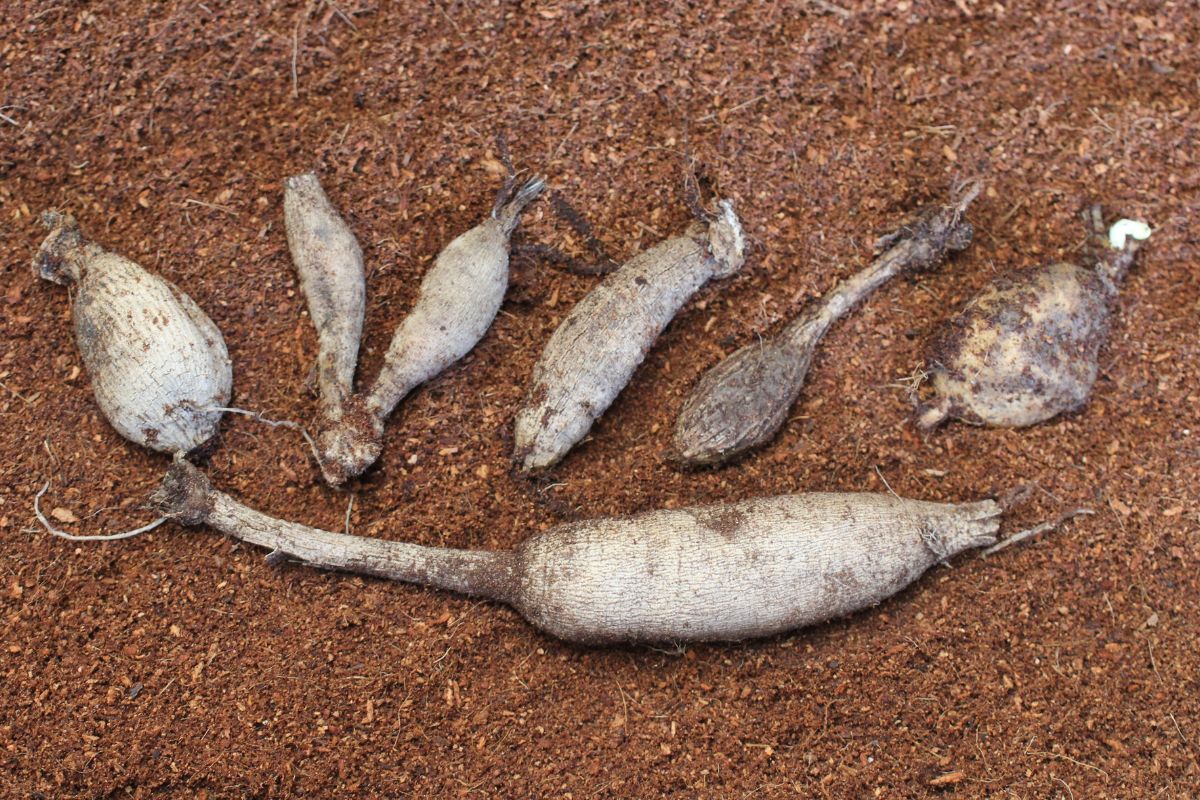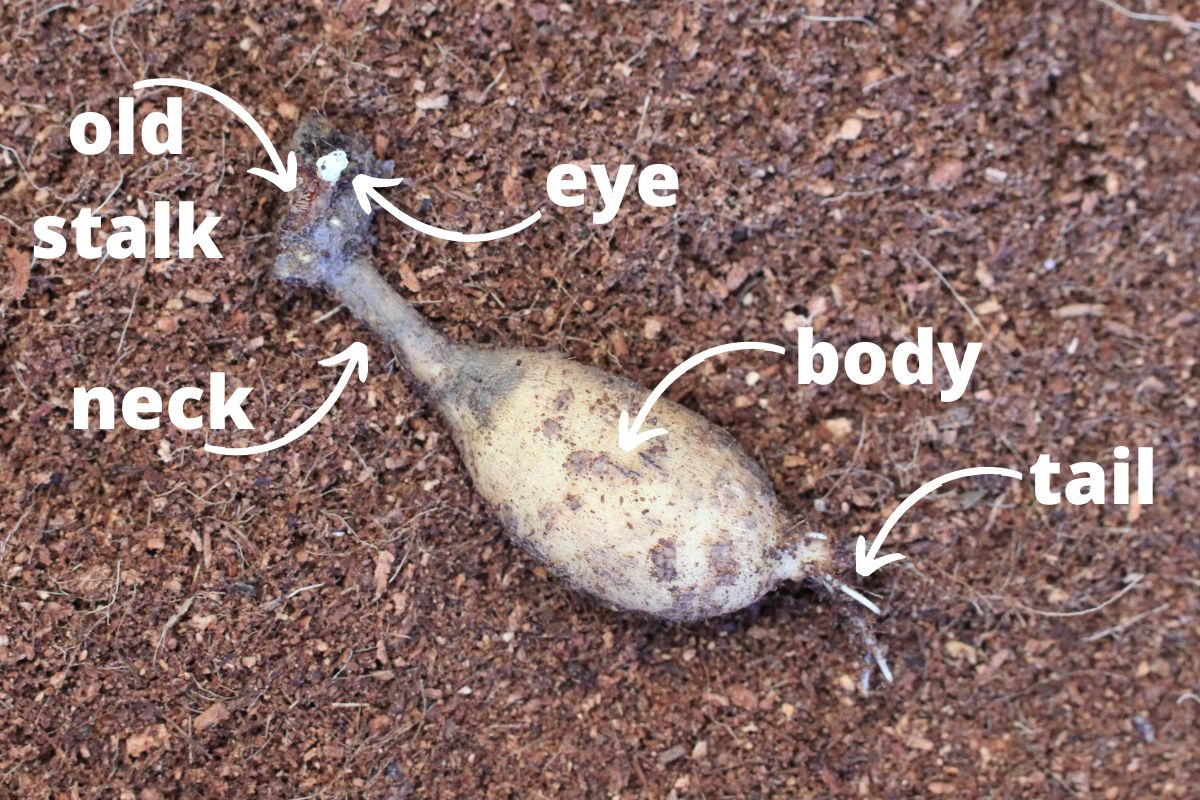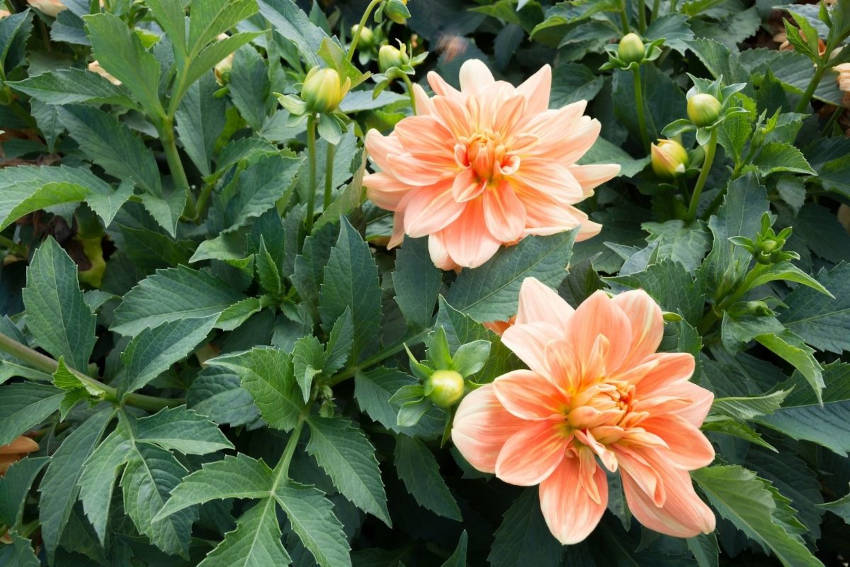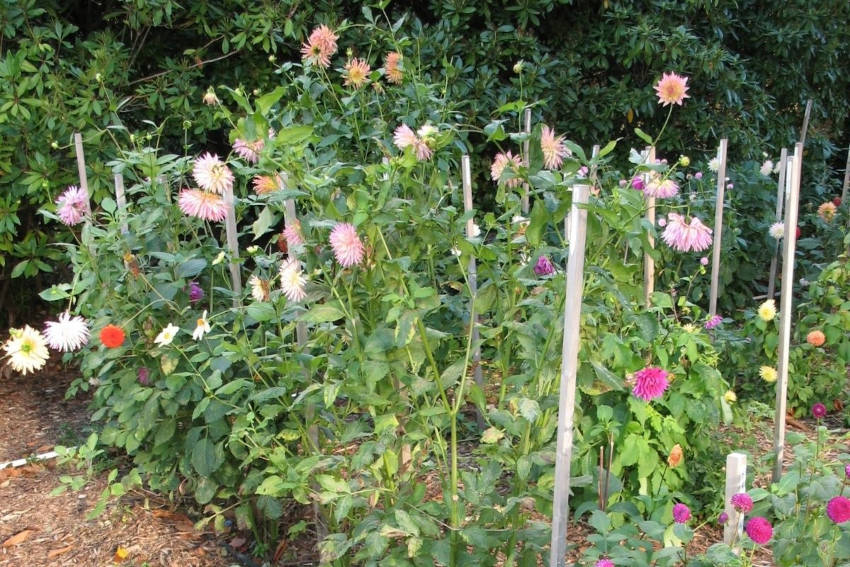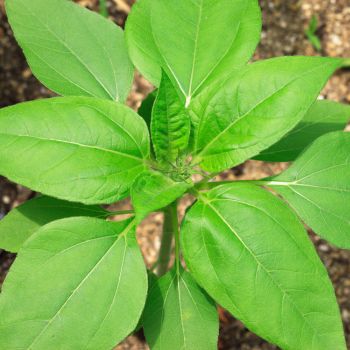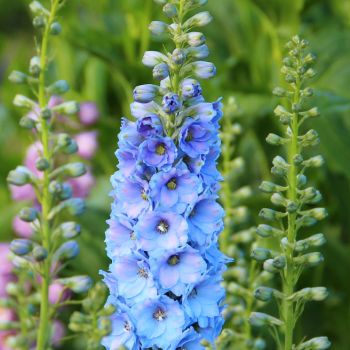If there's a single bloom that deserves a place in every border, it's the dahlia. Available in a huge range of colours, sizes and forms, dahlias bring many weeks of flamboyant colour to any garden. Dahlias have also seen a recent surge in popularity as a cut flower, bringing colour and variety to bouquets and other arrangements.
The dahlia genus originated in central America and Mexico, with early reports of varieties dating back to the late 18th century. Botanically, dahlia is a member of the daisy family, and in its original form the family likeness of the flowers is unmistakable.
Breeding over the centuries has created many different styles, from shorter 'bedding' or 'garden' types to larger specimens with huge, colourful and extravagantly petalled flowers. In modern varieties the blooms range from a dainty 5cm up to 30cm in size, all sporting petals in shades ranging from white through yellow and orange to pink and purple.
Whichever variety you choose, dahlias are perennial plants that flower from summer through to late autumn, then die back as the weather cools. They can be grown from seed or tubers. Seed is an economical option for growing mixes of colours, while growing from tubers will guarantee that the flowers produced are of a particular, named cultivar. This article is focused on planting dahlia tubers.
Location and Soil Preparation
Dahlia tubers should be planted from September to December, after any last chance of frost has passed. Plants prefer full sun, or in hotter areas a position with morning sun with some dappled afternoon shade is ideal. The soil should be finely textured and fertile, so dig over the beds before planting, incorporating plenty of compost or blood and bone as you go.
Importantly, the soil should be extremely free-draining, as dahlia tubers are notoriously prone to rotting when standing in the wet. Taller varieties will appreciate some shelter from wind, and the largest and most top-heavy dahlias need to be staked to prevent them from toppling over.
Dahlias are also happy to grow in containers. Make sure the pots are large and heavy enough to handle the taller varieties in full bloom without tipping over.
Planting the Tubers
Remove dahlia tubers from their packaging as soon as you receive them; if you aren't going to plant them straight away (perhaps because of the danger of frost), store them horizontally in a tray covered in slightly damp coir or sawdust and monitor them regularly to make sure the tubers remain in good condition.
Before planting dahlias, locate the 'eye' or growing point on each tuber. This is easier if there's already a shoot emerging, or if there's a section of last year's stem still remaining. Plant the tubers lying horizontally with the eye pointing upward, about 10cm deep and 40cm apart.
Taller varieties need staking as they grow, especially in more exposed areas or when heavy rain can be expected to weigh down the flowers. It's best to put the stakes in the ground while planting to avoid damaging the tubers later on, using one stake to support a pair of plants, one on each side.
Cover the tubers with soil and water in well, then avoid watering until the shoots emerge to reduce the risk of tuber rot.
Ongoing Cultivation
Dahlias need regular but light watering rather than occasional soaks. They're also naturally heavy or 'gross' feeders, and the blooms will benefit from applying a low-nitrogen fertiliser or layer of well-rotted compost a couple of times during the summer, starting when the plants are around 20cm high.
There are a couple of other ways to enhance and prolong the flower show during the season. First, pinch out the growing tips when the plants are around 40cm tall, or have 4-5 sets of leaves, but before buds start to form. Not only will this encourage better blooms, but it'll also stop the stems from becoming too thick and unwieldy which hampers their use as cut flowers.
It’s also important to cut the flowers regularly to stimulate new growth. This is easy if you’re cutting the flowers for the vase; if you wish to enjoy them in the garden, remove fading blooms by deadheading. Once a dahlia starts to set seed no more flowers will be produced for the season.
After flowering is over, prune the plants back to half their height, leaving some foliage behind to replenish the tubers' energy stores. And finally, once the leaves start to change colour in late autumn or early winter, cut the plants back to 10cm from the ground in readiness for overwintering.
Should Dahlias Be Lifted?
In mild conditions, dahlia tubers can be left in the ground over winter and they'll happily regrow in spring. However, ensure the soil remains freely draining throughout to avoid the ever-present risk of rotting. If in doubt, lift the tubers and store them covered in damp coir or sawdust in a cool, dark place without allowing them to dry out completely.
Whether or not wet winters are a risk, it's useful to lift dahlia tubers every couple of years to stop them becoming too congested as they multiply. You can also take the opportunity to divide clumps to produce new plants, making sure that each divided part of the tuber has its own growing point or eye to re-shoot from.
Common Pests and Diseases
Dahlias aren't exempt from the timeless battle against slugs and snails, particularly as the tender shoots emerge in spring. Take your usual precautions such as beer traps, evening patrols or organic pellets.
They can also be afflicted by powdery mildew, especially when overcrowded or grown in humid conditions. Reduce the risks by ensuring the correct spacing for healthy airflow, watering the ground rather than the plant, and watering only in the mornings to avoid overnight dampness. Any badly affected plants should be cut back and disposed of to stop the mildew from spreading.
Dahlias are also at risk from several mosaic and wilt viruses which usually show up as mottled discolouration on the leaves, or as crinkling foliage with deformed growth. These viruses are generally spread by sap-sucking insects such as aphids, so keep pest populations under control as a first defence. Manage infections by sterilising your snips in a 10% bleach solution when pruning or cutting, and dispose of affected plants away from your compost to contain the problem.
Lastly, crown gall is a bacterial disease that affects the stems and tubers, entering through wounds and showing up as small swellings at the base of the stem. Infected plants may not show any real problems or dramatically reduced growth, but it's good practice to avoid sharing or transplanting infected tubers so that the disease isn't transmitted any further.
These potential problems aside, growing dahlias is straightforward, and will reward a modest amount of effort with an extravagant display that brightens your borders from summer through to late autumn.
